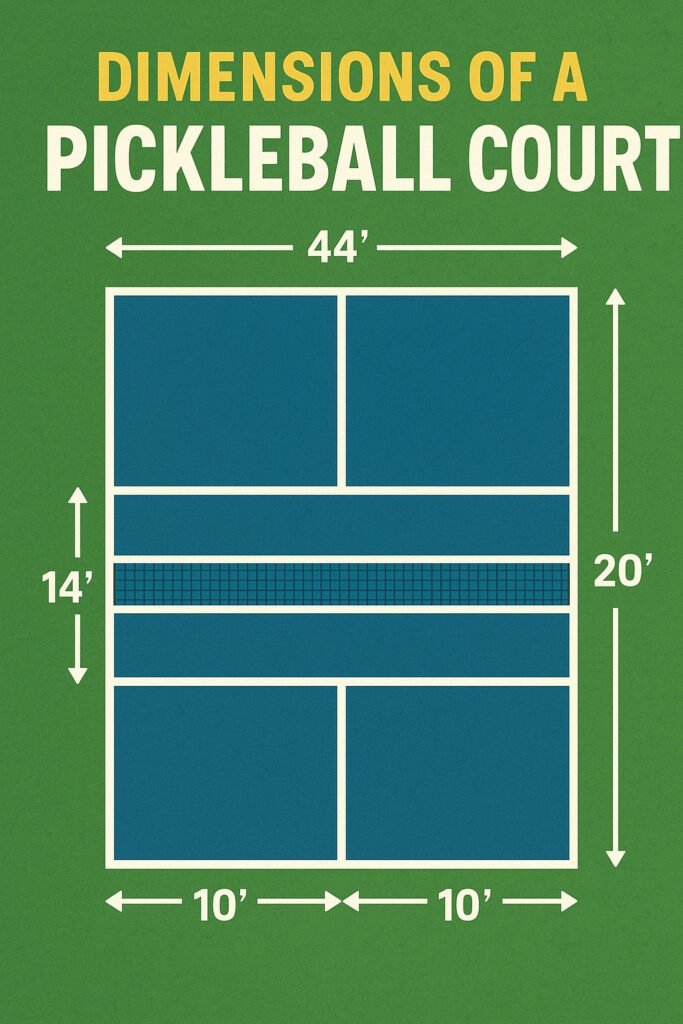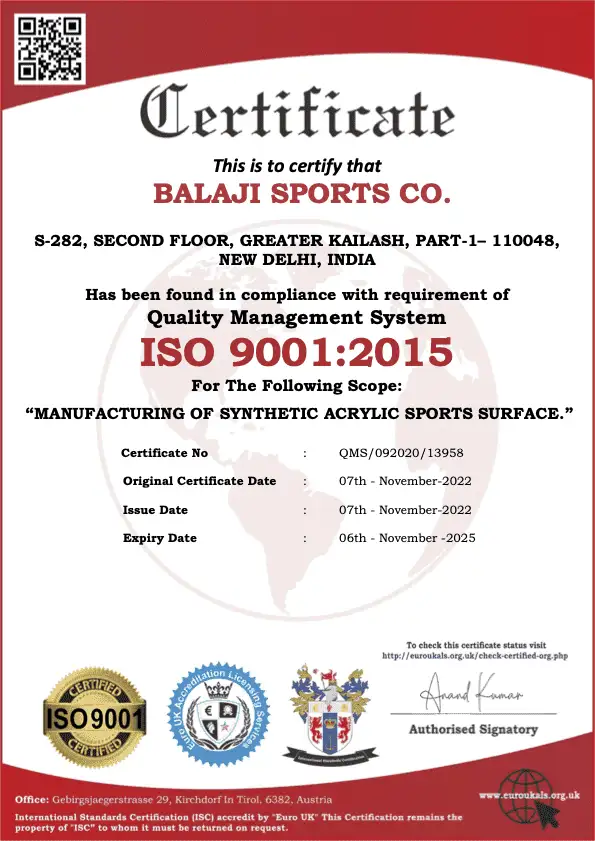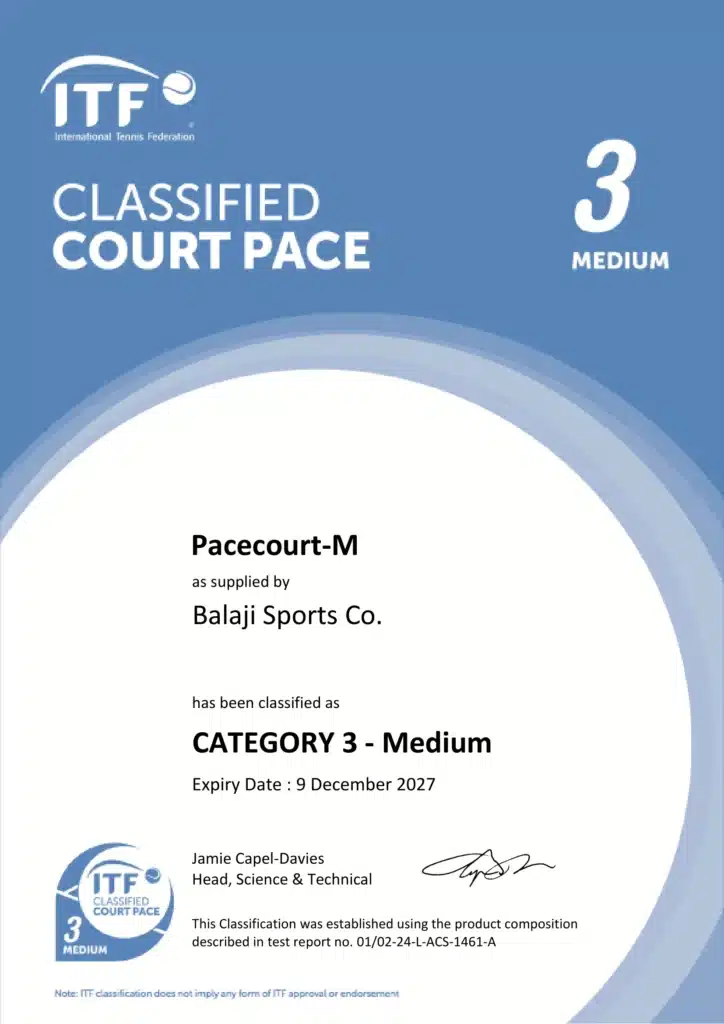Pickleball is gaining its popularity, attracting players of all ages. Whether you are building a pickleball court flooring for personal use, for community, or a commercial, understanding the right pickleball court surfaces, dimensions, installation, and costs is crucial. It started in the ’60s and has turned into world’s most popular sports. Pickleball is truly one of the fastest-growing sports today and considered a world phenomena. This guide covers everything you need to know about building the perfect size pickleball court. Constructing requires attention to pickleball court flooring size and pickleball court surface material and installation methods. The official-size require pickleball court dimensions of 20 feet wide and 44 feet long for singles or doubles play. Selection of the correct surface-material-concrete, asphalt, tiles specifically designed for sports-and its durability and playability be taken into consideration. Quality pickleball court installations, ensures safety and a good experience for everyone. Pacecourt specialize in outdoor floor solutions, with expertise that helps you make an informed choice on your pickleball court build. pickleball court size in square feet There are distinct pickleball court dimensions that define a standard court. Actual construction of the pickleball court should be enough for the specified standard dimensions. Before it becomes eligible for use by players. A standard pickleball doubles and singles court is 20 feet wide and 44 feet long. Which really is the size of a doubles badminton court. Safety and Play Area It is mandatory to have dimensions of the standard pickleball courts, but space area should be left for complete playing court. In order to promote safety and facilitate flooring. Regular court dimensions not enough because, outside the court’s landscape boundary, areas should be constructed to serve as alternative space. Recommended Total Playing Surface Dimensions For better play and safety, dimensions should- Best Surfaces for Pickleball Court Acrylic Coated Asphalt Acrylic over asphalt finishes are low-maintenance, smooth, and durable. The surface is excellent for traction and weather resistance, and hence the outdoor court surfaces are highly preferred with this option. The acrylic coating makes the asphalt more durable and ensures a consistent game experience. Concrete with Specialized Paint Concrete surfaces, when painted with special pickleball court paint, provide a uniform playing experience. This mix is super tough and you can get it in lots of colors. Concrete lasts ages and stands up to all kinds of weather, so it’s great for courts outside. Cushioned Acrylic Surfaces Cushioned pickleball court surfaces, made with rubber or acrylic, are a solid middle ground between comfort and how well you can play. They’ve got some give, which is easier on your joints, but the ball still bounces right and keeps its speed. Players who opt for cushioned courts value their comfort and their injury prevention. Synthetic Acrylic Flooring Courts Synthetic Acrylic Flooring Courts are copies of natural grass in appearance and texture but need lower maintenance. They give a uniform playing surface and are popular in multi-sport gyms. These courts are durable and can stand extreme weather conditions. Pickleball Court Construction and Installation Pickleball court construction entails precise planning and construction activities to ensure a quality playing surface meeting official requirements. Key steps in the construction of a pickleball court are provided below. 1. Selection and Preparation of the Site 2. Base Layer 3. Surface Installation Choosing the surface materials depending on the material chosen, i.e., asphalt, concrete, or a specialized floor, the surface layer is applied and leveled without imperfections. Each offers its benefits. 4. Marking the Court 5. Installing Net and Equipment Pickleball Court vs. Tennis Court Having the variety that there are real differences of pickleball court vs. tennis court is indeed a good foundation in optimizing multi-sport facilities. A tennis court measures 78 ft long by 36 ft wide, thus having an approximate surface area equal to 2,808 sq ft. A standard pickleball court is 44 ft long by 20 ft wide, thus measuring 880 ft, making the area difference significant and allowing more flexible utilization space. Pickleball courts don’t need a lot of space, so you can put them in lots of different places. From a much smaller size, flexible use of spaces clears the way for two or three pickleball courts using the space assigned to a tennis court. A regulation full-size 60-foot-wide by 120-foot-long tennis court can accommodate four regulation pickleball courts 20 by 44 feet, thereby efficiently maximizing use of space through maximum flexibility in programming. Case Study Case Study1: Revamping a Community Center with Pickleball Courts A community center in Gujrat, undertook a full campus redevelopment of 55 acres aimed at increasing recreation and drawing more members. Integral to the venture was the creation of outdoor pickleball courts in response to the sport’s explosion in popularity as well as member demand for additional types of sports facilities. This strategic improvement was designed to encourage community interaction, encourage healthy lifestyles, and establish Center as the go-to location for current and future members. Case Study2: Converting a Rooftop Carpark into Pickleball Courts of A Club A Club in Chennai saw a special opportunity to address the increasing demand for pickleball facilities by suggesting the redevelopment of part of its rooftop carpark into six designated pickleball courts. The thinking behind this was to make optimal use of unused space while offering recreational activities for the surrounding community. Conclusion Building or changing courts for pickleball provides a worthwhile contribution to recreational facilities, encouraging physical activity and social interaction. Adhering to official pickleball court size and incorporating aspects like surface material and net requirements ensures facilities can offer excellent playing experiences. Working with qualified contractors guarantees efficient and budget-friendly project completion that meets the requirements of varied user groups. Frequently Asked QuestionS













